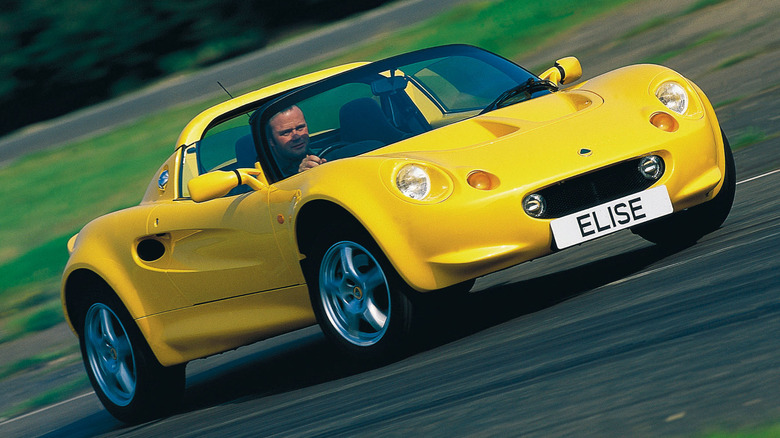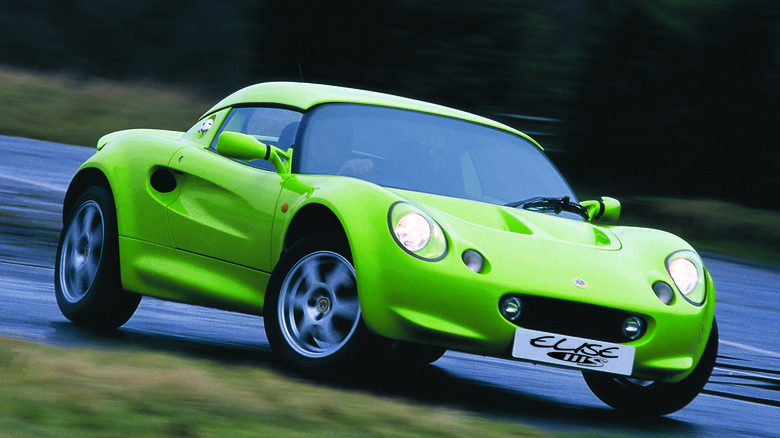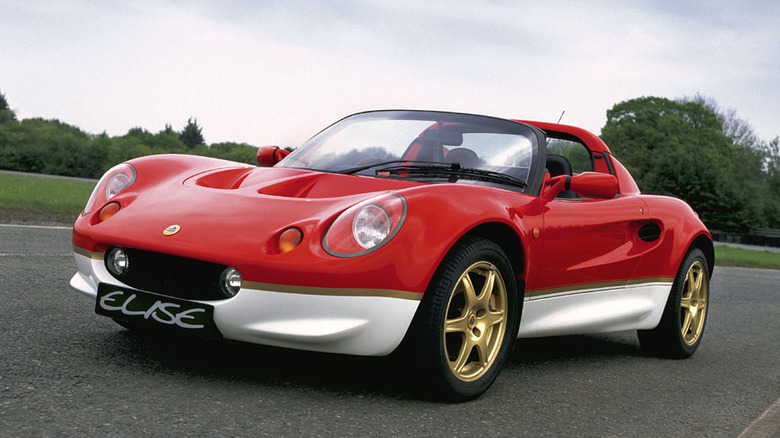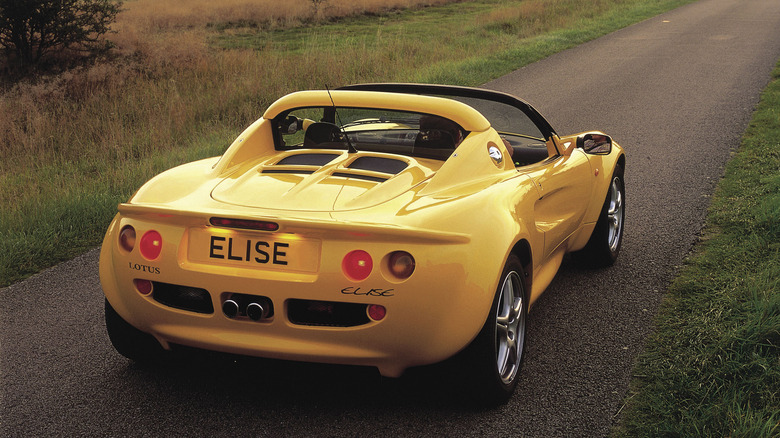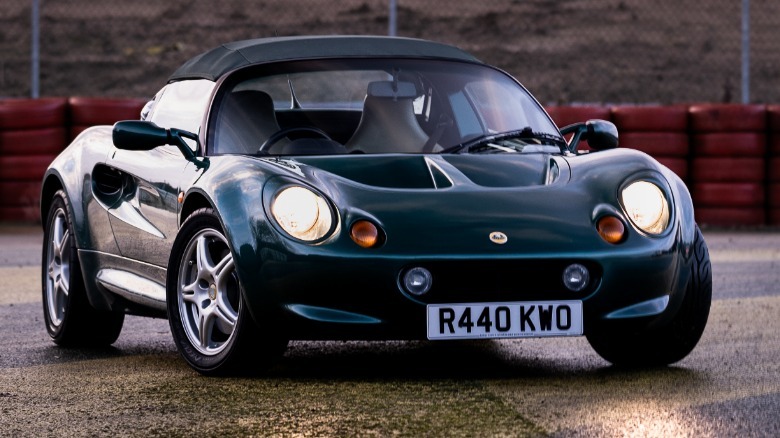Here's How Much The Banned Lotus Elise S1 Is Worth Today
The Lotus Elise S1, or Series 1 (produced from 1996 to 2001), took the company's motto "simplify, then add lightness" to its logical conclusion. It was powered by a Rover K-Series engine that produced only 118 horsepower. That may not seem like a lot, and in most cases, barely over 100 horsepower won't get you very far. But the Lotus had a secret up its sleeve: it weighed just over 1,500 pounds, making the little Rover motor behave more like a rocket booster.
The Elise achieved this incredible weight through the then-advanced usage of fiberglass and an extruded aluminum frame, according to Lotus. The little car had a 0-60 time of 5.5 seconds, according to its makers. That's nearly a full three seconds faster than the first-generation Mazda Miata's 8.4 seconds, a car known for its legendary handling and lighter weight (via Motorweek). Much like other models from the brand, unfortunately, the United States never got to experience the first run of the Elise for a rather simple reason.
Universally adored sports car
The first-generation Lotus Elise was adored by reviewers overseas, and anyone who drove one praised the vehicles light nature and incredible maneuverability. It was touted as a better car than the aforementioned Mazda Miata, according to Goodwood. That's high praise: Given the little car's open-air nature, it was fun to drive at any speed.
However, as with a lot of compact British sports cars, reliability can be hit or miss — especially with its Rover-sourced powerplant. According to owner surveys, the car was absolutely fantastic when it was in working order, and a headache when it was in the shop.
The Elise, and its subsequent warm reception among reviewers and drivers alike, has been credited with pulling the road car division of Lotus out of despair. According to Road and Track, the Elise's lack of power steering and creature comforts of any kind worked immensely in the car's favor, and gave the driver a more direct connection to the road — one that wasn't muddled by unnecessary details like interior carpet or air conditioning.
Simplified to the extreme
During the Lotus' relatively short time in production, the car was available in a number of special editions. The Lotus Elise 340R was the top of the performance spectrum: As the name suggested, only 340 were ever built towards the end of the first generation in the late 1990s.
According to Lotus, the 340R was the most extreme track version of the Elise that had every single conceivable weight saving measure applied. That meant no doors or a roof of any kind, and it barely had mirrors and fenders. Because of its rarity, 340Rs don't show up for auction very often. In 2017, one such car sold on Bring a Trailer for a cool $50,000, despite not being street-legal in the U.S.
While drivers across the pond got to have all the fun during the first generation of the Elise, Americans got to see what all the hype was about when the second generation came stateside for the 2005 model year. That version was upgraded in most ways, and included airbags for good measure. The old Rover engine was axed in favor of a powerplant from Toyota — specifically from the Celica.
Regardless of what side of the Atlantic you're from, the Elise will be fondly remembered as not only one of the greatest British sports cars, but one of the best possible examples of a lightweight track performer. According to Lotus, the Elise was "the world's benchmark lightweight performance car," and it may be right.
Not suited for the States
The Lotus was compact, nimble, simplistic and incredibly fast, but that wasn't the reason why it wasn't allowed in America. Given the Lotus' miniscule weight, it's likely it wouldn't fare well in a collision with large American cars. But the real reason Uncle Sam said no to the Elise was its Rover K-Series powerplant. It couldn't cut the mustard when it came to emissions standards, and Lotus wasn't willing to make a U.S.-compliant Elise until much later (via Road and Track).
Over its five-year production cycle, Lotus made around 12,000 Series 1 Elise cars. It's hardly a one-off model, but there still aren't many around after the two decades since ending production. On auction sites like Car and Classic, most well-preserved, low-mileage Elises are priced between £20,000 and £30,000 (around $24K to $35K USD). The first few model years of the Elise are approaching the age where it can be legally imported stateside. As long as you are willing to deal with the hassle of importing and maintaining a featherweight British sportscar, it might not be a bad deal.
